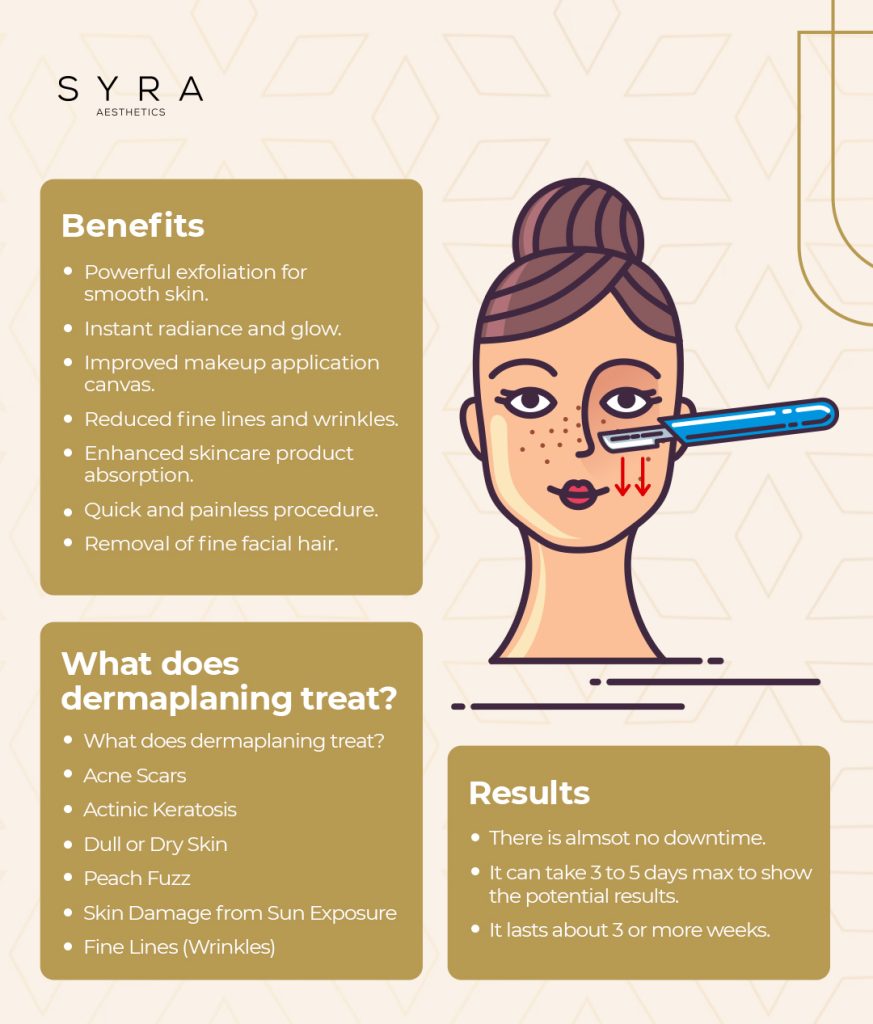This post contains affiliate links.
Dermaplaning should be done on dry skin. It helps remove dead skin cells and peach fuzz effectively.
Dermaplaning has gained popularity for its ability to exfoliate the skin and remove fine facial hair. This non-invasive treatment can leave your skin feeling smoother and looking more radiant. People appreciate its immediate results and minimal downtime. However, understanding the correct method is crucial to avoid potential skin irritation.
Dermaplaning on dry skin ensures better results and reduces the risk of nicks and cuts. This guide will highlight the pros and cons of dermaplaning and provide step-by-step instructions to perform it correctly for the best outcomes.

Contents
What Is Dermaplaning?
Dermaplaning is a popular skin treatment that many swear by. This technique can leave your skin feeling smooth and refreshed. But what exactly is dermaplaning? Let’s dive into the details.
Definition
Dermaplaning is a cosmetic procedure. It involves gently scraping the skin’s surface. This is done with a sterile surgical blade. The goal is to remove dead skin cells and fine hairs, known as peach fuzz.
Purpose
The main purpose of dermaplaning is exfoliation. By removing dead skin cells, it reveals fresher, brighter skin. This can help other skincare products penetrate deeper. It also provides a smooth canvas for makeup application.
Dermaplaning can also help with minor skin issues. These include acne scars, dull skin, and fine wrinkles. It’s a quick and painless procedure. It’s suitable for most skin types, including sensitive skin.
Benefits Of Dermaplaning On Dry Skin
Dermaplaning is a popular beauty treatment. It involves using a special blade to remove dead skin cells. This technique offers several benefits for dry skin. Read on to learn more about the specific advantages.
Exfoliation
Dermaplaning provides effective exfoliation. It removes the top layer of dead skin. This allows for smoother, healthier skin. Dry skin often feels rough and flaky. Exfoliating can help with this issue.
Here are some key benefits of exfoliation:
- Removes dead skin cells
- Unclogs pores
- Reduces fine lines
- Prevents breakouts
Regular exfoliation can make your skin look brighter. It also helps other treatments work better.
Improved Product Absorption
Dermaplaning improves product absorption. After exfoliation, your skin is more receptive. This means that creams and serums can penetrate deeper. Your skin will get the full benefits of these products.
Here’s how improved product absorption helps:
- Enhances hydration
- Boosts the effectiveness of skincare products
- Allows for better results from treatments
Better absorption means your skin stays moisturized longer. This is essential for dry skin.
Potential Risks And Drawbacks
Dermaplaning can offer smooth and radiant skin, but it has risks. Understanding these risks is crucial before trying it.
Skin Irritation
Dermaplaning on dry skin can cause skin irritation. The process involves scraping the skin’s surface with a blade. If your skin is dry, it may lead to redness and discomfort. Make sure your skin is well-hydrated before dermaplaning.
Using a hydrating serum can help. It provides a smoother surface for the blade. This reduces the risk of irritation significantly.
Risk Of Cuts
There is a risk of cuts when dermaplaning on dry skin. Dry skin can make the blade catch and cause nicks. This can be painful and may lead to infections.
To minimize the risk, always use a sharp, clean blade. Ensure your skin is taut during the process. This helps the blade glide easily over the skin.
| Potential Risk | Description |
|---|---|
| Skin Irritation | Redness and discomfort due to dry skin. |
| Risk of Cuts | Increased chance of nicks and infections. |
Be mindful of these risks and take proper precautions. This ensures a safe and effective dermaplaning experience.

Step-by-step Guide To Dermaplaning
Dermaplaning can provide you with smooth, glowing skin. This step-by-step guide will help you dermaplane correctly, whether you’re a beginner or a pro.
Preparation
Preparation is key for effective dermaplaning. Follow these simple steps:
- Cleanse your face: Use a gentle cleanser to remove dirt and oil.
- Dry your skin: Pat your face dry with a clean towel.
- Gather your tools: You’ll need a dermaplaning tool and a mirror.
- Sanitize the tool: Wipe the blade with alcohol to prevent infection.
Technique
Follow these steps to dermaplane your skin effectively:
- Hold the skin taut: Use one hand to pull the skin tight.
- Angle the blade: Hold the blade at a 45-degree angle.
- Short strokes: Use short, gentle strokes to remove hair and dead skin.
- Avoid sensitive areas: Skip areas with active acne or irritation.
- Rinse and moisturize: Wash your face and apply a hydrating moisturizer.
Dermaplaning can be a beneficial part of your skincare routine. Just follow these steps for the best results.
Post-dermaplaning Care
After dermaplaning, your skin needs special care to stay healthy and radiant. Proper post-dermaplaning care ensures you maximize the benefits and minimize any potential irritation.
Moisturizing
Moisturizing is crucial after dermaplaning. Your skin may feel dry and sensitive. Apply a gentle, hydrating moisturizer immediately. Look for ingredients like hyaluronic acid and glycerin. These help lock in moisture and soothe your skin. Avoid products with alcohol or fragrance. These can irritate.
Sun Protection
Your skin is more sensitive to the sun after dermaplaning. Always use sunscreen with at least SPF 30. Reapply every two hours if you’re outside. Wear a wide-brimmed hat for extra protection. Sunburn can damage your fresh, new skin. Protecting your skin helps maintain its smoothness and glow.

Frequently Asked Questions
What Is Dermaplaning?
Dermaplaning is a skincare treatment that removes dead skin cells and peach fuzz using a sterile surgical blade.
Should You Dermaplane On Dry Skin?
Yes, dermaplaning can be done on dry skin. It helps exfoliate and remove dead skin cells effectively.
What Are The Pros Of Dermaplaning?
Dermaplaning offers smoother skin, better product absorption, and a brighter complexion. It also helps with makeup application.
What Are The Cons Of Dermaplaning?
Cons include potential irritation, redness, and minor cuts. Sensitive skin types should proceed with caution.
How To Dermaplane Correctly At Home?
Use a sterile blade, hold the skin taut, and glide the blade gently at a 45-degree angle. Avoid sensitive areas.
Is Dermaplaning Suitable For All Skin Types?
Dermaplaning is generally safe for most skin types, except for those with active acne or skin conditions.
Conclusion
Dermaplaning on dry skin offers benefits like smoother texture and better product absorption. Be cautious of potential irritation. Follow the proper steps to achieve the best results. Remember to moisturize and protect your skin post-treatment. With the right technique, dermaplaning can be a valuable addition to your skincare routine.




